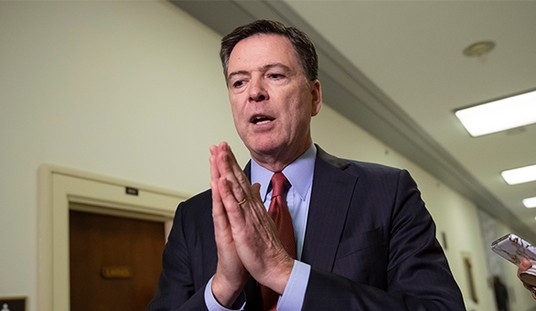Five years ago, we published a study with disturbing implications — literally millions of students may have been labeled as “disabled” and placed into special education when they didn’t really have a disability. Since then, we’ve been struggling to get past the many myths and misconceptions surrounding special education, trying to get people to see the problem.
Now there’s finally been a change, and there’s good news and bad news. The good news is, federal special education authorities have at last acknowledged the problem and adopted a policy designed to address it. The bad news is, the policy is no good.
That’s the way it usually goes in education reform — two steps forward, one step back. And the obstacles to reform in special education are unusually large, so the steps are baby steps.
But you know what they say: the first step is admitting you have a problem. And we’re glad to see that step has been taken.
Here’s the backstory: Special education enrollments grew dramatically after the federal special education law went into effect in 1976. Then, 8% of all public school students were classified as having a disability. By 1990 it was just under 11%. The growth accelerated throughout the 1990s, and by 2000 it was over 13%. The growth seems to have tapered off in the early 2000s, but the over 50% increase in the percentage of students called “disabled” remains.
The 1976 law was a crucial step forward. Before then, public schools typically did not provide appropriate services to disabled students. These students were often warehoused without receiving an education, or even turned away at the schoolhouse door. But the growth of special education enrollments since 1976 remains a troubling issue.
The growth has taken place almost entirely in the category of “specific learning disabilities,” popularly known simply as “learning disabilities” or “LD.” Other categories of disability have variously gone up and down, cancelling each other out almost perfectly. But learning disabilities have exploded.
What explains this phenomenon? As we have explained here, here, here, and elsewhere, a real increase in learning disabilities is not consistent with the evidence. For example, any environmental factor that could drive up learning disabilities (such as an increase in survival rates for preemies) would also drive up mental retardation, but that category has actually shrunk by a large margin. Society is getting healthier, not sicker.
Gaming the system to avoid accountability testing also doesn’t seem to be the culprit. The studies that have looked at this question have failed to find any relationship between special education growth and the presence or absence of accountability testing.
Our study identifies what we believe is the key. Most states provide funds for special education based on the number of students in special education programs. That is, they provide schools with a financial incentive to label more students as disabled. Several of the state special education officials we spoke to while gathering data for our study actually referred to this as “the bounty system,” because schools get a bounty for each diagnosis.
We compared the growth of special education in states with bounty funding to the growth in states that have reformed their funding systems to eliminate the bounty. We found that almost two-thirds of the special education enrollment growth was associated with the presence of financial incentives.
It’s important to note that the procedure for diagnosing learning disabilities is much more subjective and open to judgment and interpretation than the procedure for diagnosing most other disabilities. Don’t get us wrong – learning disabilities are real, and many students legitimately have them. But under current law, any student who shows signs that he is capable of performing better in the classroom than he actually does can be labeled as learning disabled. And naturally, students can be performing behind their potential if they’ve had an inadequate education, or for other reasons. Technically they’re not supposed to be diagnosed if their underperformance can be attributed to poor teaching or other non-disability factors, but that doesn’t mean it doesn’t happen.
So if students are being classified as disabled for reasons other than their actually having a disability, learning disabilities is the category where you’d expect it to happen. And that’s the category that’s exploding.
A lot of people really, really don’t want to hear this. But the data are what they are.
We’re not saying that anyone is cynically gaming the system just out of greed for a bigger budget. Of course it’s possible that’s going on in some places, but we think it’s much more likely that schools are just trying to provide as much help as possible. If you can expand your educational programs for students who are falling behind in class by putting a “disabled” label on them, that’s probably motivated by good intentions.
Alas, we know where the road paved by good intentions leads. Labeling kids as disabled when they’re not does them more harm then good. It means they’ll be getting services that aren’t appropriate to their needs, and the system will have lowered expectations for their potential. Plus, once that “disabled” label goes on, it almost never comes off.
Fortunately, there has now been a partial acknowledgement of the problem. A new program called “response to intervention” is designed to help ensure that students aren’t classified as learning disabled simply for lack of good teaching in the early grades. It allows states to divert up to 15% of their special education funding to early intervention programs.
We call this a “partial” acknowledgement of the problem because it only acknowledges that some students are being diagnosed as learning disabled when they’re really “teaching disabled.” It doesn’t reflect an acknowledgement that financial incentives are at work.
And that’s the problem with the policy. It assumes that the only problem here is a misdirection of resources; that schools would be providing better teaching if only they could free up the funds.
But school spending has been growing nonstop for decades. It has roughly doubled since 1976; we now spend about $10,000 per student. Lack of money isn’t a problem. And a very large body of empirical research has consistently failed to find any relationship between spending and outcomes.
Here’s another way of making the same point. If we don’t change the incentives that schools work under, why would we expect the new “intervention” teaching to be done any differently than the teaching they’re doing now? And if the teaching they’re doing now isn’t working, why would we expect more of the same to work?
If school behavior is being driven by incentives, that behavior will resist change until we reform the incentives. Obviously more states should reform their funding systems, but given the political obstacles to such reform, we’re not holding our breath. And a federal law mandating reform could violate federalism. On the other hand, auditing of special education placements wouldn’t expand federal authority beyond its current scope and could be effective.
But the best solution is to create a voucher program for disabled students. Five states (Florida, Ohio, Utah, Arizona, and Georgia) have already done so, and the programs are successful. In addition to providing a counterbalance to the “bounty” incentive to diagnose, vouchers improve education for disabled students. Our research has shown that Florida’s program, the first of its kind and the largest, not only provides superior services for the students who use it, it also induces public schools to provide a better education to disabled students who remain.
If even an eighth of all special education students are only there due to funding incentives — and our data suggest that’s a very conservative estimate – that’s about a million children. We need to get beyond baby steps and adopt serious reforms aimed at protecting their interests, as well as improving education for all special education students.
Greg Forster is a senior fellow at the Friedman Foundation for Educational Choice. Jay Greene is the endowed professor of education reform at the University of Arkansas and a senior fellow at the Manhattan Institute.









Join the conversation as a VIP Member